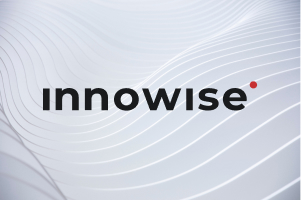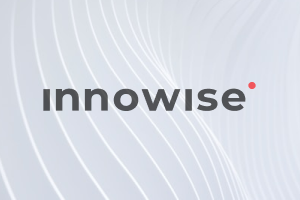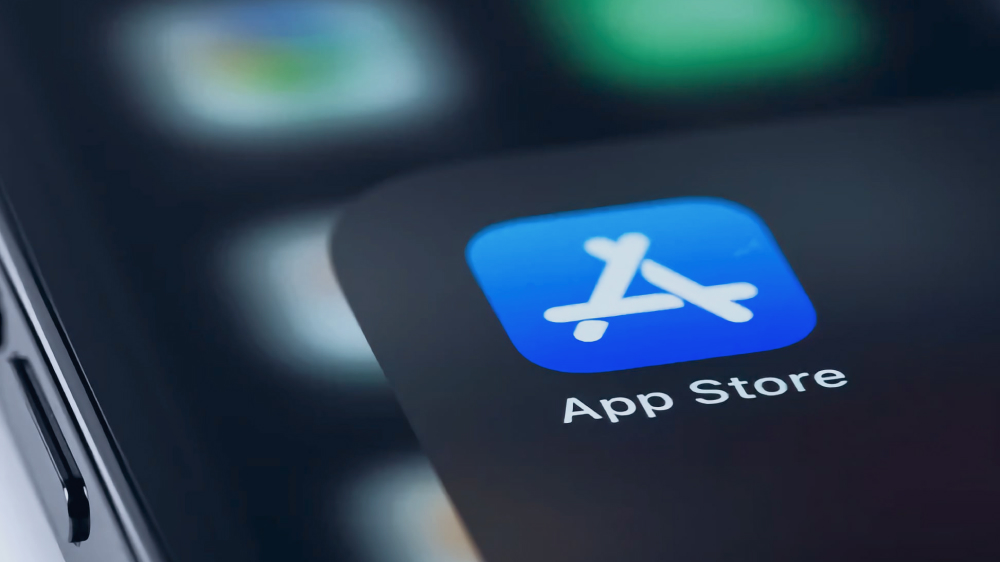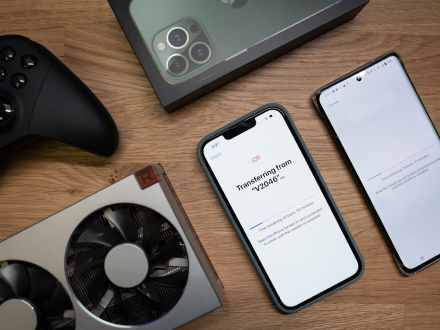Uw bericht is verzonden.
We verwerken je aanvraag en nemen zo snel mogelijk contact met je op.
Het formulier is succesvol verzonden.
Meer informatie vindt u in uw mailbox.


Ik betwijfel of iemand verbaasd zal zijn als ik zeg dat consumenten blijven vertrouwen op hun smartphones voor winkelen, communicatie, entertainment en nog veel meer. Ik heb jarenlang in dit vakgebied gewerkt en kan zeggen dat het bouwen van een gebruiksvriendelijke en betrouwbare iOS app een van de beste manieren is om aan deze behoeften te voldoen. In een mobile-first wereld, met 2,2 miljard actieve Apple apparaten wereldwijd, biedt het omarmen van het iOS ecosysteem enorme mogelijkheden om een betrokken en welvarende gebruikersgroep te bereiken.
Het zit zo: het ontwikkelen van een app is niet eenvoudig (ik weet het, ik zeg het voor de hand liggend)! Stel dat je een startup bent met een briljant idee voor een mobiele app, of een bedrijfseigenaar die zijn online bereik wil vergroten, of iemand die het probleem wil innoveren met een tech-first benadering. In elk geval zit de reis vol hobbels en hersenkrakers. Om te slagen moet je een goed inzicht hebben in de iOS ontwikkelingskosten voordat je je volgende grote stap plant. Dat roept de vraag op: hoeveel kost het om een iOS app te maken?
Nou, het antwoord is niet kant-en-klaar (sorry). Mijn ervaring heeft me dit geleerd; de kosten variëren enorm afhankelijk van belangrijke factoren, zoals de complexiteit van de app, de gewenste functies en of je lokaal Amerikaans talent inhuurt of de ontwikkeling uitbesteedt.
Aan de ene kant kunt u ontwikkelaars ter plaatse inhuren tegen een hoger prijskaartje, maar behoudt u meer controle over het project, de kwaliteit en de communicatie. Aan de andere kant kan outsourcing veel betaalbaarder zijn dan een intern team opbouwen.
In 2023 de wereldwijde markt voor outsourcing van bedrijfsprocessen werd gewaardeerd op $280,64 miljard en zal tussen 2024 en 2030 naar verwachting jaarlijks met 9,6% groeien. Bedrijven in alle sectoren beginnen over te stappen op outsourcingstrategieën. Zelfs toonaangevende techgiganten zoals Google, Facebook en IBM uitbesteden specifieke IT-bedrijfsfuncties. Deze trend wordt gevoed door betaalbaarheid, toegang tot internationaal talent, snellere time-to-market en de vraag naar gespecialiseerde vaardigheden.
In dit artikel zal ik een overzicht geven van de typische kosten voor het ontwikkelen van een iPhone / iPad / macOS app, de factoren die deze kosten beïnvloeden en enkele verborgen kosten waar je rekening mee moet houden. Hoeveel kost het om een iOS app te ontwikkelen? Alle details vind je hieronder.
Bij het schatten van de kosten van de ontwikkeling van een iOS app is het belangrijk om de verschillende factoren die een rol spelen te begrijpen. Een basisberekeningsformule kan er als volgt uitzien: App ontwikkelingskosten = (Uurtarief × Tijdlijn) × Projectcomplexiteit. Deze formule geeft je een eerste inzicht in hoe de kosten zich zouden kunnen ontvouwen.
Het uurtarief hangt af van verschillende dingen:
De tijdlijn voor de ontwikkeling van een iOS app hangt over het algemeen af van de complexiteit van het project, waarbij eenvoudige apps minder uren in beslag nemen en complexe apps aanzienlijk meer. Er zijn ook enkele aanvullende factoren om rekening mee te houden:
De complexiteit van een iOS app ontwikkelingsproject wordt bepaald door meerdere factoren:
Hoeveel kost het om een app te maken in de App store? De kosten zijn afhankelijk van een aantal factoren die elk op hun eigen manier bijdragen aan de totale kosten. Nadat ik eerder de algemene aspecten heb besproken, heb ik hieronder een gedetailleerd overzicht gemaakt om je een duidelijker beeld te geven.
De functies die je kiest voor je app kunnen van grote invloed zijn op de prijs. De ontwikkeling van een basis app met functies zoals gebruikersauthenticatie en eenvoudige database interacties zal minder kosten in vergelijking met de ontwikkeling van een iOS app op maat met functies zoals real-time chat, geavanceerde animaties of integraties met diensten van derden.
Eenvoudige apps richten zich op één primaire functie, zoals rekenmachines, timers of essentiële tools om notities te maken. Ze zijn eenvoudig, met een paar schermen met basisnavigatie, geen serverintegratie en geen externe databases - gegevens worden lokaal op het apparaat opgeslagen in plaats van in de cloud.
Door hun eenvoud vereisen deze apps minimaal programmeren, testen en onderhoud, waardoor ze het meest betaalbaar en het snelst te ontwikkelen zijn. Ook het lopende onderhoud is minimaal, waardoor de kosten verder dalen.
Apps met een gemiddelde complexiteit introduceren meer functies en functionaliteit, zoals fitnesstrackers, e-commerceplatforms met winkelwagentjes of sociale media-apps met eenvoudige gebruikersinteracties.
Deze apps omvatten vaak:
Hoewel apps met een gemiddelde complexiteit een hogere initiële investering vereisen, zijn ze gebouwd met het oog op schaalbaarheid, waardoor ze na verloop van tijd een toename in gebruikersactiviteit en gegevensgroei aankunnen.
Zeer complexe apps zijn ontworpen voor geavanceerde functionaliteiten en vereisten op bedrijfsniveau. Voorbeelden hiervan zijn handelsplatformen voor aandelen, realtime berichtensystemen of toepassingen met AR/VR-technologieën.
Bij deze apps gaat het vaak om:
Deze apps ontwikkelen vereist senior-level expertise in backend-architectuur, databasebeheer en geavanceerd UI/UX-ontwerp. Functies zoals realtime updates zijn afhankelijk van servers met een lage latentie, cloudinfrastructuur en een robuuste systeemarchitectuur.
Clutch onthulde dat volgens 50% van de consumenten, het ontwerp van een website een belangrijke rol speelt bij het vormgeven van het merk van een bedrijf, waardoor het duidelijk is dat bedrijven hier prioriteit aan moeten geven. De top visuele elementen die consumenten aanspreken zijn foto's/afbeeldingen (40%), kleur (39%) en video's (21%), die bedrijven zouden moeten overwegen voor hun ontwerpen.
Een goed ontworpen UI/UX kan een grote invloed hebben op de algehele gebruikerservaring en het succes van een app. Hier is het bewijs: een echt geval uit de echte wereld. Onze klant, een gerenommeerd ski-resort in Italië, kwam bij ons met een verouderde mobiele app, die ontevredenheid bij de gebruikers veroorzaakte door een slecht ontwerp, crashes en een ingewikkelde flow.
Innowise vernieuwde de app met een uitgebreid UI/UX-herontwerp, verbeterde gebruikersstromen en optimaliseerde de bedrijfslogica voor snellere prestaties. We voegden ook Apple Watch-ondersteuning toe, integreerden nieuwe functies zoals een galerij en verhalen, en voerden grondige tests uit om de stabiliteit te garanderen.
Het resultaat is werkelijk fantastisch! Een 90% vermindering in app crashes en 30.000 nieuwe gebruikers binnen slechts twee weken na de lancering, waardoor de betrokkenheid en tevredenheid van de gebruikers aanzienlijk is toegenomen.
Daarom is het belangrijk om een iOS app te maken met een gebruiksvriendelijk, mobiel geoptimaliseerd en consistent ontwerp, maar het draagt ook bij aan de kosten van iOS app ontwikkeling. Op maat gemaakte ontwerpen voor jouw app kunnen duurder zijn dan ontwerpen op basis van sjablonen.
De kosten voor het ontwerpen van een iOS-app en de bijbehorende UI hangen grotendeels af van de mate van complexiteit, de beschikbare functies en de vaardigheden van de ontwerper. Deze schattingen kunnen echter veranderen, afhankelijk van het aantal uren dat de ontwerpen worden aangepast, de deadlines van het project en extra functies.
API's zijn meer dan alleen dataconnectors - het zijn strategische activa:
Het integreren van API's van derden, zoals betalingsgateways, geolocatieservices of sociale media, kan zowel functionaliteit als kosten toevoegen.
De kosten kunnen sterk variëren afhankelijk van de regio waar de ontwikkelaars zich bevinden. Terwijl regio's met hoge kosten snellere doorlooptijden en eenvoudigere communicatie kunnen bieden, kunnen regio's met lagere kosten vergelijkbare kwaliteit leveren met de juiste doorlichting en beheer, vaak tegen een fractie van de kosten.
"Kwaliteitsontwikkeling hoeft niet gepaard te gaan met een hoog prijskaartje. Wij kiezen zelf bekwame ontwikkelaars die voldoen aan zowel uw projectbehoeften als uw budgetverwachtingen en leveren uitzonderlijke resultaten zonder compromissen. Huur onze experts vandaag nog in en ervaar het verschil."

Valerij Vasiljevitsj
Hoofd iOS-ontwikkeling
Het is gemakkelijk om te denken dat het budgetteren van alleen de ontwikkeling van de app genoeg is, maar tijdens het proces wordt het overduidelijk dat er een heleboel extra kosten zijn waar velen in de planningsfase geen rekening mee houden. Deze onvoorziene kosten kunnen het totale projectbudget aanzienlijk verhogen en omvatten kosten voor publicatie, ondersteuning, updates en andere aspecten die vaak worden onderschat of over het hoofd worden gezien. Hieronder heb ik een aantal factoren besproken die het aanvankelijk geplande budget voor je iPhone app ontwikkeling project kunnen verhogen.
De jaarlijkse vergoeding voor het bijhouden van een Apple Developer account is $99. Deze vergoeding is vereist om apps in te dienen bij de App Store, toegang te krijgen tot tools voor ontwikkelaars en deel te nemen aan verschillende Apple diensten, waaronder TestFlight voor het testen van apps en toegang tot bètasoftware. Deze vergoeding is de standaard voor individuele en zakelijke accounts.
Apple laadt een 30% vergoeding op alle apps en in-app aankopen. De officiële website van Apple beschrijft de 15% commissie voor ontwikkelaars die minder dan $1 miljoen per jaar verdienen. Voor abonnementen die langer dan een jaar lopen, verlaagt Apple zijn commissie van 30% naar 15% voor de daaropvolgende jaren. Voor sommige apps, zoals apps die fysieke goederen of diensten aanbieden (bijv. Uber, Netflix), gelden mogelijk niet dezelfde vergoedingen voor bepaalde transacties.

Na de lancering van je app zijn er onderhoudskosten voor updates en bugfixes. Trek jaarlijks 15-20% van de initiële ontwikkelingskosten uit voor het onderhoud van je app. Maar zie het niet als een verplicht bedrag dat je extra moet betalen. Deze percentages zijn slechts ruwe schattingen. De werkelijke onderhoudskosten kunnen aanzienlijk variëren op basis van hoe vaak updates nodig zijn, de complexiteit van de app en het niveau van de vereiste voortdurende ondersteuning.

Als je app veel gegevens gebruikt, zoals afbeeldingen of video's, kan een CDN voor het leveren van de inhoud nodig zijn om snelle en stabiele prestaties te leveren. Dit kan regelmatige kosten met zich meebrengen voor het opzetten en onderhouden van CDN-services. Gemiddeld kunnen de kosten voor het gebruik van een CDN voor kleine en middelgrote apps variëren van $20 tot $200 per maand. Dit is afhankelijk van de hoeveelheid gegevens, het verkeer en het serviceniveau dat je nodig hebt.

Regelmatige updates vergen tijd en middelen van ontwikkelaars, ontwerpers en testers. Dit proces kan leiden tot doorlopende kosten op basis van de complexiteit en frequentie van updates. Elke update vereist een nieuwe indiening bij de App Store, wat geen extra kosten met zich meebrengt, maar wel administratieve inspanningen en naleving van de App Store richtlijnen.
Het testen van updates voor verschillende iOS-versies en apparaten kan tijdrovend zijn, vooral voor apps met een groot gebruikersbestand. Afhankelijk van de schaal van de app kunnen de kosten van regelmatige updates variëren van een paar honderd tot enkele duizenden euro's per jaar.
Om onverwachte kosten bij de ontwikkeling van een mobiele iOS app te voorkomen, moet je van tevoren rekening houden met mogelijke verborgen kosten en zorgvuldiger plannen. Dit is waar Innowise kan helpen.

Door uit te besteden via Innowise kunnen bedrijven iOS ontwikkelaars inhuren zonder de rompslomp van het beheren van een intern team. U betaalt alleen voor de specifieke vaardigheden en uren die nodig zijn, wat een aanzienlijke kostenbesparing oplevert in vergelijking met het uitbreiden van uw interne personeelsbestand.
Hoeveel kost het om een app te maken met Innowise? We bepalen de totale kosten van iPhone app ontwikkeling, samen met iPad en macOS app kosten, door rekening te houden met meerdere factoren. Hier zijn er enkele.
Het type app dat je wilt bouwen heeft een directe invloed op de functies, technologieën en ontwikkelingstijd. Gezondheidszorg-apps moeten voldoen aan de HIPAA-voorschriften en functies bevatten zoals telegeneeskunde of patiëntmonitoring.
De grootte van je doelgroep heeft invloed op de architectuur, serververeisten en schaalbaarheid van de app. Grotere gebruikersbasissen kunnen extra functies vereisen zoals content delivery networks (CDN's) of geavanceerde beveiligingsfuncties.
Monetisatiestrategie beïnvloedt de ontwikkelfuncties en het app-ontwerp. Een abonnementsmodel kan gebruikersaccountbeheer, terugkerende facturering en content-gating functies vereisen.
Het geschatte budget voor ERP-implementatie helpt bij het bepalen van de omvang van het project en de benodigde middelen. In tegenstelling tot MVP omvat een complete app-versie de ontwikkeling van alle geplande functies, wat doorgaans meer middelen vergt en duurder is.
We bieden een handige rekenmachine waarmee je een schatting kunt maken van de geschatte kosten voor de ontwikkeling van een iOS app op basis van de eerder genoemde specifieke factoren. Nadat je de gegevens van je project hebt ingevuld, krijg je een berekening op maat die je helpt inzicht te krijgen in de mogelijke benodigde investering.
Deze informatie kan een goed uitgangspunt zijn voor het efficiënt begroten en plannen van je iOS ontwikkelingsproject. Of het nu gaat om de kosten voor het ontwikkelen van een iPhone app, een iPad of een macOS app, we beoordelen elke categorie afzonderlijk en garanderen dat ze perfect aansluiten op je budget en bedrijfsdoelen.
Hoeveel kost het om in 2025 een iOS-app te maken? Dat hangt ervan af. Een eenvoudige app met basisfuncties? Beter betaalbaar. Een complexe app met aangepaste ontwerpen, API-integraties en geavanceerde functionaliteit? Dat is een grotere investering. De tarieven voor ontwikkelaars variëren per locatie en vergeet de verborgen kosten niet: App Store-kosten, updates en onderhoud tellen allemaal op. Als je op zoek bent naar een globaal bedrag (of een gedetailleerde schatting), kan Innowise je helpen dit bedrag te berekenen.
We berekenen de Apple app-ontwikkelingskosten door rekening te houden met het uurtarief van ontwikkelaars, de complexiteit en functies van je app, de branche en eventuele aanvullende API-integraties. Gemiddeld variëren de kosten voor het maken van een app voor iPhone van relatief laag voor basisapps tot aanzienlijk hoger voor grote, complexe applicaties met geavanceerde functies.
Apple vraagt een eenmalige $99 jaarlijkse vergoeding voor een ontwikkelaarsaccount voor particulieren of bedrijven. Na betaling van deze vergoeding kun je je apps lanceren en promoten in de App Store.
Ja, iOS apps kunnen zeer winstgevend zijn als ze echte waarde bieden, gebruikers effectief betrekken en goed geplande strategieën voor geld verdienen implementeren. Het succes hangt vaak af van factoren zoals de marktvraag, het behoud van gebruikers en de mogelijkheid om een specifiek probleem op te lossen of het gebruiksgemak te verhogen.
De kosten voor het ontwikkelen van iOS-apps zijn meestal hoger dan die voor Android-apps. De redenen hiervoor zijn de strengere richtlijnen en ontwerpverwachtingen van Apple en de behoefte aan hardware van hogere kwaliteit en testnormen.














Uw bericht is verzonden.
We verwerken je aanvraag en nemen zo snel mogelijk contact met je op.

Door u aan te melden gaat u akkoord met onze Privacybeleidmet inbegrip van het gebruik van cookies en de overdracht van uw persoonlijke gegevens.